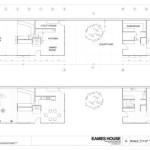Thatched Farm House Plans: Essential Aspects
Thatched farm houses exude charm, character, and a connection to nature. These traditional dwellings are a popular choice for those seeking a unique and idyllic rural lifestyle. However, before embarking on the journey of building a thatched farm house, it is crucial to consider the essential aspects that will ensure its authenticity, sustainability, and aesthetic appeal.
1. Roofing and Materials
The thatched roof is the defining feature of a farm house. It consists of layers of natural materials, such as straw, reed, or heather, that are carefully bundled and secured to the roof structure. The thickness and density of the thatch determine its insulating properties, with thicker layers providing better insulation. Choosing the right thatching material is essential for durability and longevity, as different materials have varying lifespans and require specific maintenance practices.
2. Structural Integrity
Thatched farm houses require robust structural support to withstand the weight of the roof and ensure stability. Traditional framing methods, such as timber framing, are commonly used to create a sturdy framework. The walls, typically made of stone or brick, must be thick enough to provide adequate support and insulation. It is crucial to consult with experienced builders who specialize in the construction of thatched farm houses to ensure proper structural integrity.
3. Ventilation
Ventilation is essential for maintaining the health and longevity of thatched roofs. Adequate airflow prevents moisture from accumulating within the thatch, which can lead to rot and deterioration. Roof vents and eaves allow air to circulate, removing moisture and ensuring the roof remains dry. Proper ventilation also helps regulate indoor humidity levels, creating a comfortable living environment.
4. Fire Safety
Thatched roofs are inherently more susceptible to fire than traditional roofing materials. Therefore, it is paramount to incorporate fire safety measures into the design and construction of a thatched farm house. Flame retardants can be applied to the thatch, and chimneys should be regularly inspected and maintained to prevent sparks from igniting the roof. Additionally, it is advisable to install fire extinguishers and smoke detectors throughout the house for early detection and mitigation of fire hazards.
5. Landscaping
The surrounding landscape plays a crucial role in the overall aesthetics and functionality of a thatched farm house. Thoughtful landscaping can enhance the charm of the property and provide practical benefits. Planting trees and shrubs around the house can provide shade, reduce wind exposure, and improve insulation. Gardens and paths can create outdoor living spaces and connect the house to its natural surroundings. Consider using native plants that are adapted to the local climate and require minimal maintenance.
6. Local Regulations and Planning
Before embarking on the construction of a thatched farm house, it is imperative to research and comply with local regulations and planning requirements. Some areas may have specific restrictions or guidelines regarding the use of thatched roofing. It is advisable to consult with local authorities and obtain necessary permits to ensure that your plans align with the regulations and avoid potential delays or setbacks.
7. Ongoing Maintenance
Thatched roofs require regular maintenance to preserve their condition and extend their lifespan. This includes periodic inspections and repairs, as well as occasional re-thatching. The frequency of maintenance depends on the type of thatching material used and the local climate. It is important to budget for ongoing maintenance and engage reputable thatchers who can expertly maintain the roof and ensure its longevity.
In conclusion, planning and constructing a thatched farm house involves careful consideration of essential aspects such as roofing, structural integrity, ventilation, fire safety, landscaping, local regulations, and ongoing maintenance. By embracing these factors, you can create a beautiful and sustainable home that embodies the charm and character of traditional rural living.

Rowena S Thatch Cottage Floor Plans House

3 Bedroom Thatch Roof House Plan Th385as Inhouseplans Com

An Elegant Thatched Farmhouse Farmer S Weekly

Farm House Design Village Bungalow Style Plans Building Designs

3 Bedroom Thatch Roof House Plan Th72an Inhouseplans Com

Thatched Roof House On A Hill Id 13416 Designs By Maramani

3 Bedroom Thatch Roof House Plan Th72an Inhouseplans Com

Thatch Dezeen

Thatch Roof 3 Bedroom House Id 13421 Thatched Classic Design

A Dream Farmhouse In Zambia Farmer S Weekly








